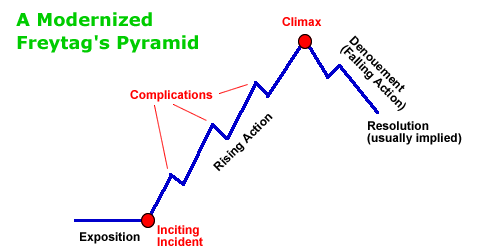Title of Work and its Form: “Love and Industry: A Midwestern Notebook,” creative nonfiction
Author: Sonya Huber (on Twitter @sonyahuber)
Date of Work: 2013
Where the Work Can Be Found: The piece won first place in the annual contest held by Terrain.org: A Journal of the Built + Natural Environments. You can read the piece here.
Bonuses: Here is an interview Ms. Huber gave to Rkvry. Here is Ms. Huber’s Huffington Post page. Here is the Amazon page for Ms. Huber’s book, Opa Nobody. Why not consider picking up a copy?
Element of Craft We’re Stealing: Narration
Discussion:
“Love and Industry” is a brief lyric essay in the second person. In the essay, “you” tour the crumbling infrastructure of the Midwest and meet some of the people who cope with the changing nature of the American Dream. Ms. Huber helps you see some of the innate beauty in these rusting Rust Belt landscapes. The piece seems designed to encourage the reader to understand that humanity, like pioneer species after a forest fire, will inevitably shape its surroundings.
So Ms. Huber has a lot of ambitious goals in mind for this piece. She seemed to want to do the following:
- Share some beautiful poetry related to the urban environment.
- Reinforce the humanity of some of the folks we sometimes don’t consider in literature or otherwise.
- Take the reader on a tour of some of America’s ailing cities.
- Convince you to love a landscape you might otherwise ignore.
- And do it all in the second person.
- And in the space of only a few pages.
This is a tall order! Because she is such a good writer, Ms. Huber knew that she needed a very pushy narrator. Look at the first words in each of each paragraph: fall, believe, look, feel, look, watch. The narrator is bullying you with verbs. It’s telling you what to do! (Yes, I know one paragraph doesn’t begin with a verb. The point stands.) This piece would not be as successful if Ms. Huber made use of a passive narrator. The tour of the Rust Belt chugs along in the hands of a “controlling” storyteller.
It may only be my experience, but it seems to me that many of the lines are blurring between writing forms. What’s the difference between nonfiction and creative nonfiction? Prose and a prose poem? And how much does it really matter? I suppose I don’t know too many writers who are ONLY poets or ONLY short story writers. A writer, of course, is perfectly welcome to play in any sandbox they choose. The important point to remember, I believe is that we are allowed to borrow from the toolboxes carried along by other kinds of writers. Even though this piece is lyric nonfiction, Ms. Huber clearly makes use of some of the weapons generally wielded by poets. Many of her phrases are beautiful poetry employed in the service of her point. Your favorite phrases may be different, but here are a couple of the lines I particularly loved:
This is love the way you fall in love with viaducts, chipped concrete with the steel veins of rebar, the way you fall in love with a telephone pole covered with rusted industrial-strength staples, the rock show posters all melted away in the weather and time.
You can read a philosophy on those surfaces, can vaguely make out the palimpsest of hope in the foreign language of a splash of yellow that somehow survived around those lovely pockmarked metal walls.
Poetry is perhaps most preoccupied with the beauty of language; Ms. Huber has made use of this idea in her nonfiction piece. Why not reach across the invisible aisles and pluck some tools from the workshops of other writers?
As I pointed out in my essay about Erin McGraw’s short story, “Punchline,” Erin often encourages students to analyze structure in something of a mathematical fashion. The length of a passage, a chapter, a scene…they should reflect the importance of the part to the whole of the narrative. Look at the lengths of the numbered sections in Ms. Huber’s piece:
- 117 words
- 85 words
- 140 words
- 202 words
- 393 words
- 98 words
I’ve plotted this data on a chart:
Hmmm…does this line look familiar?
Even though this is NOT a traditional story, Ms. Huber still adheres to the traditional story structure in an important way.
What Should We Steal?
- Hire a bully to narrate particularly complicated pieces. If you’re writing a 500-page novel about a woman who escapes to a beach house to think about life, your narrator can take his or her time. When you have a LOT going on in your story, your narrator must be much more of a taskmaster.
- Borrow the tools that are ordinarily used by writers in other genres and forms. Fiction writers are very good at releasing exposition and establishing situations…creative nonfiction writers know how to use their personal experiences.
- Take a left-brained (analytical) look at your right-brain (creative) work. If nothing else, taking a look at your art in terms of cold, hard numbers may create the distance you need to think about your work in an objective manner.


